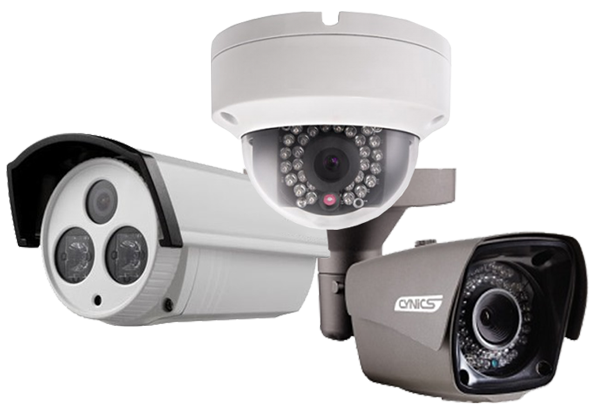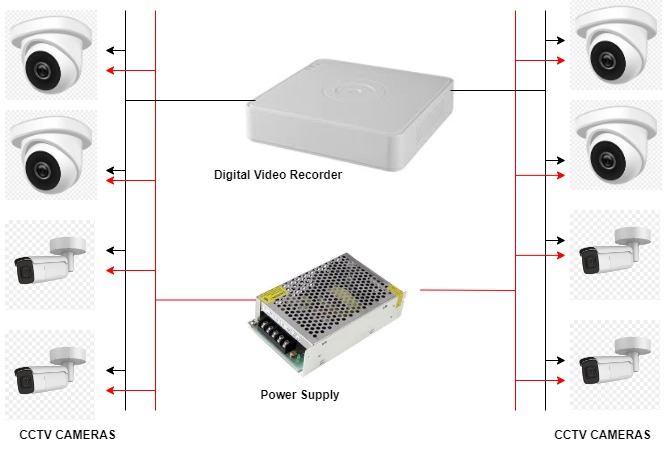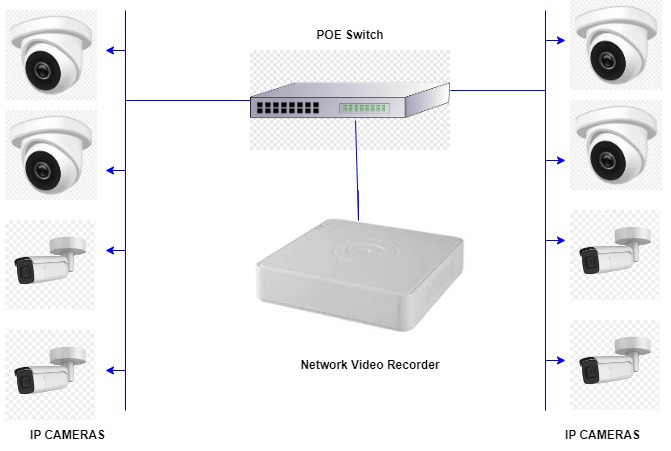Comparing CCTV Cameras and IP Cameras: Comprehensive Guide

CCTV (Closed Circuit Television) and IP (Internet Protocol) cameras are two types of surveillance cameras that are widely used in various settings. CCTV cameras transmit analog signals to a limited set of monitors, making them a closed circuit. People commonly use them for security purposes in businesses, public areas, and homes. In contrast, IP cameras use digital signals and people can connect them to a network. This makes them more flexible and accessible from remote locations, as long as there is an internet connection. Moreover, IP cameras do not require a Digital Video Recorder (DVR) as they can store footage on a Network Video Recorder (NVR) or a secure cloud storage. In contrast, CCTV cameras require a DVR to store footage. While CCTV cameras have been around for a longer time, IP cameras have gained popularity in recent years due to their advanced features, such as higher resolution, remote access, and motion detection. Ultimately, the specific needs of the user and the setting in which they will install the cameras determine the choice between CCTV and IP cameras.
CCTV CAMERAS (ANALOG CAMERA)

CCTV (Closed Circuit Television) cameras use analog signals and DVRs (Digital Video Recorders) to record videos. A hard drive in the DVR stores the recorded video, which viewed locally by connecting a monitor to a DVR and remotely by connecting a network cable to the DVR
For CCTV cameras, a separate power cable are drawn as the images will be processed in a DVR and transmitted over a coaxial cable.
IP CAMERA (DIGITAL CAMERA)

IP (Internet Protocol) cameras use digital signals recorded by NVRs (Network Video Recorders). Similar to DVRs, NVRs have hard drives that store recorded video viewed locally by connecting a monitor to the NVR and remotely by connecting to the Internet
When people power IP cameras with a POE injector, they route both the video feed and power through a single cable. IP cameras process images only in them and send them via LAN cables.
COMPARISON
Analog Camera (CCTV) vs Digital Camera (IP Camera)
Price / Cost
Camera and Video Recorder (NVR or DVR)
A complete CCTV 4 channel system with monitor and wiring costs approximately INR 15,000, whereas an IP camera system with monitor costs approximately INR 27,000.
Scalability Cost
The initial cost of an NVR system may be high, but expanding the system is as simple as plugging in a POE switch and adding cameras, unlike DVRs that require pulling a cable from the camera to the system.
Expanding a CCTV system can be costly because all the cameras in the system connect directly to the DVR. Since a single DVR can only hold up to 16 cameras, the number of cameras that can be added to the network is limited. Additional cameras are also required for additional DVRs. With IP cameras, these limitations do not exist, and more cameras can be added to the network. It is not expensive if you only need additional storage.
Wiring Cost
A well-planned IP camera could lead to lower wiring costs.
Consider installing CCTV cameras in a four-story commercial building. Each floor requires 8 cameras, for a total of 32 cameras. Reputable manufacturers only produce DVR’s with a maximum of 16 input channels, so we require 2 DVR’s. Each camera requires a wire run from the camera to the DVR’s. As the cable length increases, the video quality degrades due to impedance in the path. If two separate displays need to be combined into a single display, an HDMI switch is a must.
Connecting the cameras to the POE port of the nearest existing network switch will work in the same scenario as long as all of the cameras and NVR are on the same network.
Recorders
CCTV requires a DVR to view recorded video, while IP cameras do not require an NVR. If the camera is connected to a local network, you can view it in real time. Since most modern cameras have an SD memory card, you can view the videos later after they have been saved to the SD card.
To record video from a CCTV camera, you must connect all of the cables back to the DVR, but for IP cameras, one LAN cable from the network is sufficient to view and record the video. Using IP cameras yields better image quality, whereas using CCTV cameras yields variable signal loss during transmission. A physical digital video recorder (DVR) is used to store video in digital format over a coaxial cable. When the DVR is connected to the Internet, remote viewing is possible.
IP cameras are usually plug-and-play devices that uses NVR (Network Video Recorder) instead traditional DVR to store digital content. Unlike analog CCTV cameras, IP cameras send video footage as a digital data stream to a network video recorder (NVR) using computer network (LAN) or Internet protocols. The IP camera is connected to the same network as the NVR. It uses PoE (Power over Ethernet)
The maximum resolution supported by CCTV cameras is 1080p, while IP cameras support up to 8K resolution
What is ONVIF ?
The Open Network Video Interface Forum commonly known as ONVIF. Its goal is to define how various IP-based security devices should interact with one another. Simply put, ONVIF requirements allow devices from various manufacturers to interact in ways that they could not previously. All devices can communicate with one another using these ONVIF standards, which serve as a universal language.
The end user benefits from interoperability because they are no longer reliant on a single brand to make things work; instead, a company can now employ systems from multiple distinct brands while adhering to a single communication standard. There is no problem because, thanks to the ONVIF standard, they can all collaborate.
No, not all IP cameras have received “ONVIF IP camera” certification. On the other hand, more new ONVIF-compliant devices are joining the community. ONVIF currently claims over 20,000 conformant items.
A security camera system based on ONVIF is adaptable and future-proof. To tailor features to your specific requirements, you can either use a video security system from the same company or mix and match devices.
If you buy an entire system from one manufacturer, you can always add additional brands as long as they all adhere to the same profile. The advantage of ONVIF compliance is that it broadens the capabilities of your security system both now and in the future.
